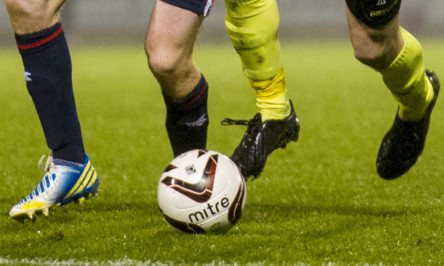One in eight football clubs in Scotland are facing financial failure, a new survey has found.
Four clubs in the top three Scottish divisions were facing “critical” financial pressure at the end of last month, according to the report by corporate rescue and recovery specialists Begbies Traynor.
It found that a further 16 clubs, half of those in the report, are showing early, less serious signs of financial distress.
The report warned that many clubs were stuck in a “cycle of distress” and suggested they revisit their business models and look at measures like fan-based ownership.
The Football Distress Survey also reported static average attendance and season ticket revenues across the four divisions of the Scottish Professional Football League (SPFL).
Ken Pattullo, of Begbies Traynor Scotland, said: “The fact is that, like businesses in many sectors, some clubs are pulling away from others in financial terms and those clubs that are staggering on, barely able to meet their financial commitments, are edging closer to falling over.
“The majority of the clubs are now locked into their cycle of distress. It is hard to see what, aside from a big investment, will save these clubs from facing administration, unless they completely revisit their business models and make some fundamental changes.
“Alternative structures such as community interest companies and fan-based ownership may well become an increasing part of the solution.”
One in eight clubs (12%) are in serious trouble, the same as the last survey which was conducted in March this year.
However, the report said that football club coffers are typically healthiest at the start of the season and warned there are likely to be more serious problems for many clubs by early next year.
The report also found that Rangers’ brief stay at the bottom of the league has benefited the other clubs in League Two, with only two of the clubs in that division showing signs of distress after enjoying a massive increase in average attendances during the last season.
The Ibrox club’s promotion to League One has seen a huge recent spike in attendances, with a 700% boost to average gates so far this season.
Financial experts suggested that clubs should look at other measures to improve their finances.
Alistair Dickson, of BTG Financial Consulting, said: “The majority of troubled clubs in Scotland can no longer rely on wealthy benefactors swooping in as white knights. The clubs that are now effectively locked into this cycle of financial pressure need to look hard at their business models.
“Along with identifying where cost savings can be made, including reductions in the wage bill, clubs need to find innovative ways of generating additional income streams.
“Some clubs are likely to conclude that it makes financial sense for the fans, who support the club week in and week out, to take a long-term stake in the clubs themselves and help secure their future by extending their reach to the wider community.
“The community club model has been shown to work all over Europe, from the amateur ranks all the way to the mighty Barcelona and is an integral part of German football. The model has a real future in Scottish football.
“In fact, aside from merging and consolidating clubs together, or allowing those that fail to create a reduction in the number of clubs, it is possibly the only hope for many. We expect at least three additional Scottish clubs to become fan-owned by 2015.”
The average attendances for the season so far (as at October 13) range from just over 10,000 in the Scottish Premier League to less than 500 in League Two.
The report did not name the four clubs said to be facing “critical” financial pressure.
